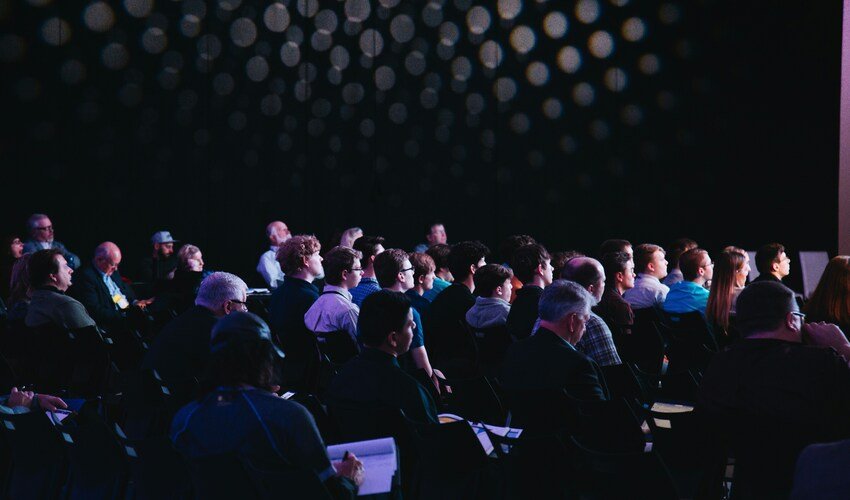Tech conferences have evolved far beyond lecture halls and exhibitor booths. They are now immersive experiences where every detail, from stage lighting to swag, contributes to the event’s overall impact.
For companies looking to stand out, branded merchandise has become more than just a takeaway item. It’s a statement of identity, a conversation starter, and a way to enhance brand recognition long after the event concludes.
Consider the example of takeaway items, such as poker chips, which are both functional and memorable. Custom-made poker chips can be used as unique tokens for prize draws, networking games, or even as collectible conversation pieces.
According to The Poker Depot, there are endless customization options available. You can add your logo or some event details to the chips. You can either design the chips on your own or seek help from service providers to promote your brand.
The Rise of Eco-Friendly Materials
Sustainability has become a major consideration for event merchandise.
As a Forbes article notes, conferences can produce a high carbon footprint. Besides the environmental impact, there’s also the waste of food, marketing materials, and freebies. Virtual and hybrid events are an ideal way to minimize these consequences. However, brands can go a step further by reducing the environmental impact right from the core.
Attendees are increasingly aware of the environmental impact of promotional items, and brands that address this concern can position themselves as forward-thinking.
According to PwC, consumers are willing to pay premium prices for sustainable products. Despite the rising cost-of-living and inflation concerns, they can pay a 9.7% sustainability premium.
Recycled fabrics, biodegradable packaging, and reusable drinkware are now common sights at tech events.
The design challenge lies in making eco-friendly merchandise as appealing as its less sustainable counterparts. Innovations in materials mean that items such as bamboo phone stands or recycled polyester backpacks can be both stylish and durable.
How can brands verify the environmental claims of their merchandise suppliers?
Brands should request certifications such as FSC (Forest Stewardship Council), GOTS (Global Organic Textile Standard), or ISO environmental management credentials. They can also audit supply chains or request transparency reports to ensure the supplier’s claims about recyclability, biodegradability, or sustainable sourcing are legitimate.
Personalization Through Technology
Another emerging trend is the integration of personalization at the event itself.
With on-site printing, engraving, or laser cutting, attendees can have their names or custom graphics added to a product in minutes. This approach transforms generic merchandise into a one-of-a-kind keepsake.
In a tech conference environment, this aligns well with the spirit of innovation and customization. It gives attendees a tangible reminder that their experience was unique.
Consider the example of the IBM Think event from May 2023. According to Event Marketer, it created an efficient environment for personalized experiences for networking and marketing professionals. The aim was to make IBM Think a flagship for targeted conference experiences.
QR codes and NFC tags are also being embedded into merchandise, linking physical items to digital experiences. These could lead to exclusive content, product demos, or special offers, extending the brand interaction well beyond the event.
How can technology-enabled personalization be used after the event ends?
Items embedded with QR codes or NFC tags can link to updated content months after the event, allowing for seamless integration and ongoing relevance. For example, a personalized notebook could later provide access to post-event webinars, product updates, or exclusive loyalty discounts.
Design Aesthetics: Minimalism and Modernity
In line with the sleek and innovative nature of the tech industry, minimalist and modern design aesthetics are dominating branded merchandise. This is not merely an artistic choice but a strategic one.
Research has shown that minimalist design can be a powerful tool for brand perception. For instance, a ResearchGate study on consumer behavior found that simple packaging designs increase the perception of product purity and quality. This makes consumers more willing to learn about the product and even pay for it.
Here are some ways in which brands are ensuring minimalism and modernity at tech conferences:
- Clean lines and simple graphics: Avoiding cluttered designs and overly loud branding. They are opting for clean lines, minimalist logos, and a restrained color palette. Let the quality of the product and the subtle branding speak for themselves.
- Sophisticated color palettes: Brands are moving beyond basic primary colors. Embrace sophisticated and modern color palettes, including muted tones, earthy hues, and tech-inspired shades like deep blues, grays, and blacks.
- Premium feel: They are investing in high-quality materials and finishes. A well-crafted item, even if small, conveys a sense of value and attention to detail, reflecting positively on the brand.
Interactive Merchandise for Engagement
Tech conferences are about connection, and merchandise is increasingly being used to drive live engagement. Rather than passively handing out branded items, many companies now design giveaways that encourage attendees to interact with the brand in real time. This approach transforms merchandise from a static souvenir into an active part of the conference experience.
One popular example is AR-enabled items, where scanning a design with a smartphone unlocks hidden animations, mini-games, or product demos.
A printed conference badge might reveal a 3D company mascot when viewed through an augmented reality app. This can turn what would have been a simple name tag into a memorable tech-driven moment.
Puzzle-based giveaways are another way brands spark curiosity. These might involve physical pieces handed out at different booths, encouraging attendees to visit multiple locations to complete a set. The completed item could unlock a digital reward or entry into a prize draw. This kind of gamification not only keeps attendees engaged but also boosts foot traffic for exhibitors.
What role does storytelling play in interactive merchandise design?
Storytelling gives interactive merchandise a cohesive purpose. Instead of random engagement activities, each touchpoint can be tied to a narrative that aligns with the brand’s message. This keeps the interaction memorable and emotionally resonant rather than feeling like a forced marketing gimmick.
Branded merchandise at tech conferences has moved well beyond the days of generic giveaways. Today, every item handed out can carry a brand’s story, reflect its values, and spark meaningful engagement.
From functional keepsakes to interactive, tech-enhanced experiences, the right design choices turn merchandise into an extension of the event itself. When companies balance creativity, utility, and audience relevance, they create pieces that people want to keep, use, and talk about even after the conference. In an environment where every interaction counts, thoughtful merchandise isn’t just a giveaway; it’s a lasting connection
Read Dive is a leading technology blog focusing on different domains like Blockchain, AI, Chatbot, Fintech, Health Tech, Software Development and Testing. For guest blogging, please feel free to contact at readdive@gmail.com.





